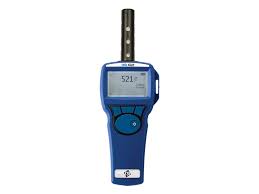Nearly 1,000 birds were killed Oct. 4-5 when they collided with an illuminated glass building in Chicago. Though mass fatalities of this magnitude are rare, light pollution poses a serious — and growing — threat to migrating birds.
In the largest study of its kind, published in Nature Communications, scientists used weather radar data to map bird stopover density in the United States and found that artificial light is a top indicator of where birds will land. City lights lure birds into what can be an ecological trap, said lead author Kyle Horton, an assistant professor in Colorado State University’s Department of Fish, Wildlife and Conservation Biology.
Buildings that lead to collisions, less habitat, scarcer food, and more people and cats can make cities less-than-ideal rest stops for migrating birds. Urban parks can be decent stopover sites, but birds that rest there might need to compete over limited resources.
Migration is a risky and exhausting time in a bird’s life. Birds migrate hundreds to thousands of miles — sometimes burning half their body mass along the way. Finding a good place to rest and refuel is critical for migrating birds to survive and thrive once they reach their destination.
“These stopover locations are the fueling stations,” Horton said. “If you’re on a cross-country trip and there’s no fueling stations, then you’re stranded. If they don’t have a good spot to rebuild energy supplies, migration can’t happen.”
The study provides the first continent-wide maps of migration stopover hotspots in the contiguous United States, and knowing these broadscale layover patterns can help in the development of conservation plans.
“Cities pose multiple risks to migrating birds,” said co-author and Michigan State University Professor Geoff Henebry. “They also offer resources for the tired birds to rest and refuel. Our study is notable in that it combines big data — and a lot of processing — from the weather surveillance radar network with big data from multiple spaceborne sensors to address key questions regarding the influence of urban areas on bird migration.”
The study pairs more than 10 million radar observations with landscape and other place-based information to try to explain why birds choose to rest where they do. Out of 49 predictors, light pollution was the No. 2 predictor of stopover density.
The top predictor was elevation, which provides context for where birds are flying but doesn’t explain why they are flying there. The patterns created by migrating birds that are picked up by radar tend to follow coastlines or a particular elevation. Light pollution is the top predictor of human influence on bird migration.
Unsuspected hazard
Birds’ attraction to cities creates a conservation conundrum: Should urban centers be conserved as important stopover locations or targeted for lights-out campaigns? Horton and his colleagues are working with nonprofit and government organizations to do both, but urban lighting involves lots of stakeholders, making it a complicated issue.
There can be social pressure to leave lights on, and some people find them aesthetically pleasing. But light pollution harms people too. It can disrupt humans’ circadian rhythms, leading to health problems including depression, insomnia, cardiovascular disease and cancer.
“We don’t often think about light as a pollutant, but it checks all the boxes of what pollution is,” Horton said.
Tools like BirdCast — a collaborative project among CSU, the Cornell Lab of Ornithology and University of Massachusetts — can help. BirdCast provides migration forecasts and real-time maps from weather radar. Anyone can create alerts to be notified when birds are flocking near their city. Forecasts pinpoint which nights are most important for reducing light pollution.
Retrofitting windows with decals like gridded dots or lines can help prevent collisions by revealing the barrier to birds. Lowering the brightness and softening the color of lights can help too. Bright white or blue lights are the worst for wildlife, while warmer hues, like red, orange and yellow, are less attractive.
Communication towers used to beam continuous red or white light to warn aircraft. Birds would circle the towers, hitting the wires that secured them. In 2016, based on conservation research, the Federal Aviation Administration started requiring communication towers to use flashing red lights, dramatically reducing bird collisions in a literal blink.
Flipping a switch to help feathered friends
The Chicago convention center collisions might be an extreme example of birds dying because of light pollution, but Horton said mass fatalities involving 100 or more birds are all too common. It is estimated that nearly one billion birds collide with buildings in the United States every year.
The casualties at McCormick Place Convention Center Oct. 4-5 were mostly songbirds — 33 species were tallied, according to the Chicago Field Museum. These birds benefit people by eating insects that plague crops and gardens, pollinating plants and distributing seeds.
Public awareness of bird migration habits would be a good place to start to help protect them from light pollution, Horton said. “Most people might not realize that birds migrate at night.”
For a complicated problem, this one has a simple solution — at least when it comes to birds.
“If we turned off all lights tonight, there would be no birds colliding because of lights tonight,” Horton said. “The impact is immediate and positive for birds.”


